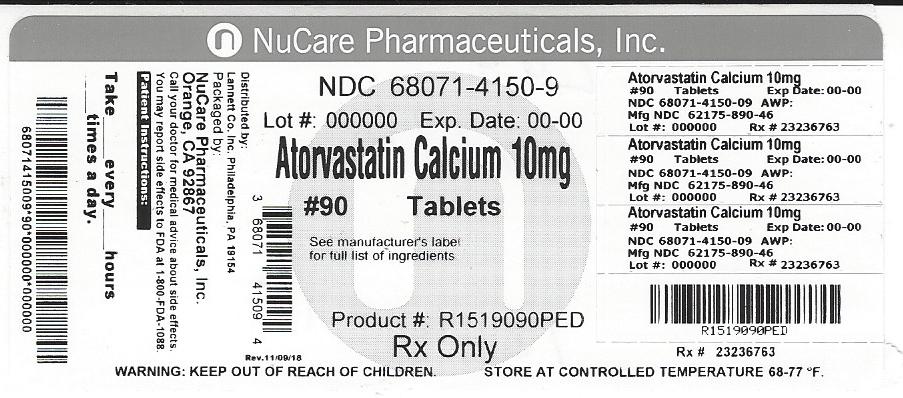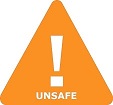For most of the drugs advantages of taking medications overweighs the potential risks however some drugs could be really dangerous for breastfed baby hence every medication shall be considered separately. In this page we will discuss about purpose of Atorvastatin Calcium Tablet, Film Coated 90 In 1 Bottle and its risk associated with lactation. We will also discuss the usage of Atorvastatin Calcium Tablet, Film Coated 90 In 1 Bottle and some common side effects associated with Atorvastatin Calcium Tablet, Film Coated 90 In 1 Bottle.
What is Atorvastatin Calcium Tablet, Film Coated 90 In 1 Bottle used for?
Therapy with lipid-altering agents should be only one component of multiple risk factor intervention in individuals at significantly increased risk for atherosclerotic vascular disease due to hypercholesterolemia. Drug therapy is recommended as an adjunct to diet when the response to a diet restricted in saturated fat and cholesterol and other nonpharmacologic measures alone has been inadequate. In patients with CHD or multiple risk factors for CHD, atorvastatin calcium tablets can be started simultaneously with diet. Atorvastatin calcium tablets is an inhibitor of HMG-CoA reductase (statin) indicated as an adjunct therapy to diet to: Reduce the risk of MI, stroke, revascularization procedures, and angina in patients without CHD, but with multiple risk factors ( 1.1). Reduce the risk of MI and stroke in patients with type 2 diabetes without CHD, but with multiple risk factors ( 1.1). Reduce the risk of non-fatal MI, fatal and non-fatal stroke, revascularization procedures, hospitalization for CHF, and angina in patients with CHD ( 1.1). Reduce elevated total-C, LDL-C, apo B, and TG levels and increase HDL-C in adult patients with primary hyperlipidemia (heterozygous familial and nonfamilial) and mixed dyslipidemia ( 1.2). Reduce elevated TG in patients with hypertriglyceridemia and primary dysbetalipoproteinemia ( 1.2). Reduce total-C and LDL-C in patients with homozygous familial hypercholesterolemia (HoFH) ( 1.2). Reduce elevated total-C, LDL-C, and apo B levels in boys and postmenarchal girls, 10 to 17 years of age, with heterozygous familial hypercholesterolemia after failing an adequate trial of diet therapy ( 1.2). Limitations of Use Atorvastatin calcium tablets has not been studied in Fredrickson Types I and V dyslipidemias. 1.1 Prevention of Cardiovascular Disease In adult patients without clinically evident coronary heart disease, but with multiple risk factors for coronary heart disease such as age, smoking, hypertension, low HDL-C, or a family history of early coronary heart disease, atorvastatin calcium tablets is indicated to: Reduce the risk of myocardial infarction Reduce the risk of stroke Reduce the risk for revascularization procedures and angina In patients with type 2 diabetes, and without clinically evident coronary heart disease, but with multiple risk factors for coronary heart disease such as retinopathy, albuminuria, smoking, or hypertension, atorvastatin calcium tablets is indicated to: Reduce the risk of myocardial infarction Reduce the risk of stroke In patients with clinically evident coronary heart disease, atorvastatin calcium tablets is indicated to: Reduce the risk of non-fatal myocardial infarction Reduce the risk of fatal and non-fatal stroke Reduce the risk for revascularization procedures Reduce the risk of hospitalization for CHF Reduce the risk of angina 1.2 Hyperlipidemia Atorvastatin calcium tablets is indicated: As an adjunct to diet to reduce elevated total-C, LDL-C, apo B, and TG levels and to increase HDL-C in patients with primary hypercholesterolemia (heterozygous familial and nonfamilial) and mixed dyslipidemia (Fredrickson Types IIa and IIb); As an adjunct to diet for the treatment of patients with elevated serum TG levels (Fredrickson Type IV); For the treatment of patients with primary dysbetalipoproteinemia (Fredrickson Type III) who do not respond adequately to diet; To reduce total-C and LDL-C in patients with homozygous familial hypercholesterolemia as an adjunct to other lipid-lowering treatments (e.g., LDL apheresis) or if such treatments are unavailable; As an adjunct to diet to reduce total-C, LDL-C, and apo B levels in boys and postmenarchal girls, 10 to 17 years of age, with heterozygous familial hypercholesterolemia if after an adequate trial of diet therapy the following findings are present: a. LDL-C remains ≥ 190 mg/dL or b. LDL-C remains ≥ 160 mg/dL and: there is a positive family history of premature cardiovascular disease or two or more other CVD risk factors are present in the pediatric patient 1.3 Limitations of Use Atorvastatin calcium tablets has not been studied in conditions where the major lipoprotein abnormality is elevation of chylomicrons (Fredrickson Types I and V).
Is Atorvastatin Calcium Tablet, Film Coated 90 In 1 Bottle safe to use while breastfeeding? Can it interfere with growth and development of my kid?
As Atorvastatin Calcium Tablet, Film Coated 90 In 1 Bottle is made of only Atorvastatin, and Atorvastatin is unsafe to use in breastfeeding we can safely reach on conclusion that Atorvastatin Calcium Tablet, Film Coated 90 In 1 Bottle is also unsafe to use while breastfeeding. Below is detailed analysis of Atorvastatin and Atorvastatin Calcium Tablet, Film Coated 90 In 1 Bottle during location. We recommend you to go through provided detailed analysis as below take decision accordingly. We also recommend you talk to your health care provider before making final decision.
Statement of Manufacturer/Labeler about breastfeeding usage
8.3 Nursing Mothers It is not known whether atorvastatin is excreted in human milk, but a small amount of another drug in this class does pass into breast milk. Nursing rat pups had plasma and liver drug levels of 50% and 40%, respectively, of that in their mother's milk. Animal breast milk drug levels may not accurately reflect human breast milk levels. Because another drug in this class passes into human milk and because statins have a potential to cause serious adverse reactions in nursing infants, women requiring atorvastatin calcium tablets treatment should be advised not to nurse their infants [see Contraindications (4) ].
Atorvastatin Calcium Tablet, Film Coated 90 In 1 Bottle Breastfeeding Analsys
UnsafeCAS Number: 134523-03-8
Statins work by blocking cholesterol synthesis. At latest update no published data on breastfeeding were found. A high plasma protein-binding capacity makes it unlikely its passage into milk.Their low oral bioavailability hinders the passage toward infant’s plasma from ingested mother’s milk, except in preterm infants and immediate neonatal period, in which the infant may have an increased intestinal permeability. It is unknown whether it is capable of altering the lipid composition of milk, albeit it is known and that the infants need to ingest high amounts of cholesterol because it is essential for a proper development of cell membranes of the nervous system and as a precursor of various hormones and vitamins. It is prudent to avoid its use, at least while breastfeeding is exclusive. Atorvastatin is possibly the safest statin drug, for its high molecular weight makes it even more difficult the passage into the milk. With Pravastatin a poor secretion into milk has been reported. Simvastatin is the one with lowest oral bioavailability. Discontinuing the treatment of hypercholesterolemia during lactation with such kind of drugs will not likely alter the long-term outcome of the disease. A low-fat diet should be recommended.
Atorvastatin Calcium Tablet, Film Coated 90 In 1 Bottle Breastfeeding Analsys - 2
CAS Number: 110862-48-1
The consensus opinion is that women taking a statin should not breastfeed because of a concern with disruption of infant lipid metabolism. However, others have argued that children homozygous for familial hypercholesterolemia are treated with statins beginning at 1 year of age, that statins have low oral bioavailability, and risks to the breastfed infant are low, especially with rosuvastatin and pravastatin.[1] Some evidence indicates that atorvastatin can be taken by nursing mothers with no obvious developmental problems in their infants. Until more data become available, an alternate drug may be preferred, especially while nursing a newborn or preterm infant.
What should I do if I am breastfeeding mother and I am already exposed to Atorvastatin Calcium Tablet, Film Coated 90 In 1 Bottle?
If you observer abnormal behavior or any other health issue in infant then you should immediately call 911 or contact other contact other emergency service provider in your area otherwise closely monitor the baby and inform your doctor about your Atorvastatin Calcium Tablet, Film Coated 90 In 1 Bottle usage and time interval of breastfeeding.
My health care provider has asked me to use Atorvastatin Calcium Tablet, Film Coated 90 In 1 Bottle, what to do?
If your doctor knows that you are breastfeeding mother and still prescribes Atorvastatin Calcium Tablet, Film Coated 90 In 1 Bottle then there must be good reason for that as Atorvastatin Calcium Tablet, Film Coated 90 In 1 Bottle is considered unsafe, It usually happens when doctor finds that overall advantage of taking outweighs the overall risk.
If I am using Atorvastatin Calcium Tablet, Film Coated 90 In 1 Bottle, will my baby need extra monitoring?
Yes, Extra monitoring is required if mother is using Atorvastatin Calcium Tablet, Film Coated 90 In 1 Bottle and breastfeeding as it is considered unsafe for baby.
Who can I talk to if I have questions about usage of Atorvastatin Calcium Tablet, Film Coated 90 In 1 Bottle in breastfeeding?
US
National Womens Health and Breastfeeding Helpline: 800-994-9662 (TDD 888-220-5446) 9 a.m. and 6 p.m. ET, Monday through Friday
UK
National Breastfeeding Helpline: 0300-100-0212 9.30am to 9.30pm, daily
Association of Breastfeeding Mothers: 0300-330-5453
La Leche League: 0345-120-2918
The Breastfeeding Network supporter line in Bengali and Sylheti: 0300-456-2421
National Childbirth Trust (NCT): 0300-330-0700
Australia
National Breastfeeding Helpline: 1800-686-268 24 hours a day, 7 days a week
Canada
Telehealth Ontario for breastfeeding: 1-866-797-0000 24 hours a day, 7 days a week
Drug Brands with same Active ingredients


